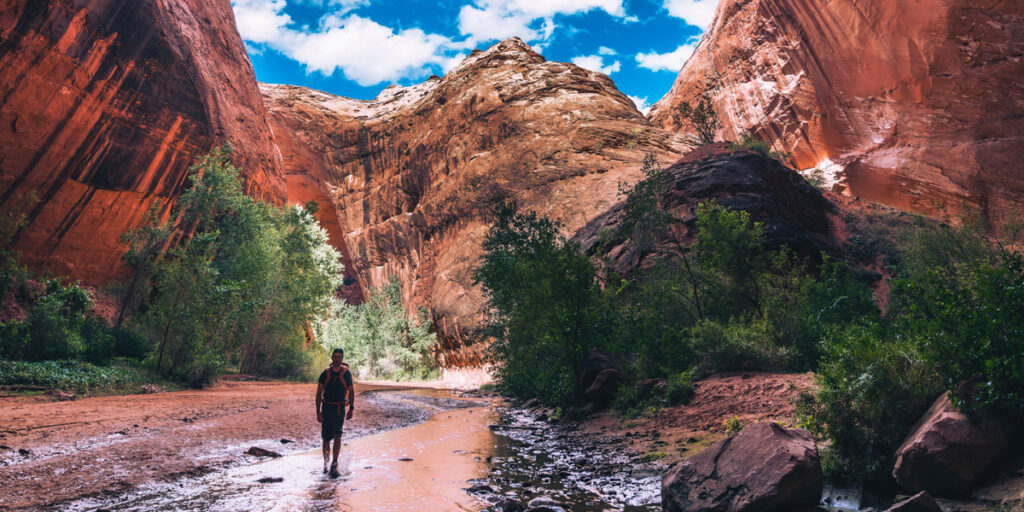
Forever Our Rivers is excited to announce grants totaling $169,591 to support the restoration efforts in the Dolores, Escalante, Verde and Gila rivers spanning Colorado, Utah and Arizona. Restoration will focus on removing thick stands of invasive trees and bushes.
Invasive species wreak havoc on river systems. Some plants, like tamarisk, form dense thickets and grow to 20 feet. They bring fire danger to the river because their growth includes high levels of dead leaves and branches. And that’s not all! They make themselves at home by aggressively colonizing. Their leaves deposit salt above and below the soil, making it difficult for native species to survive.
Tamarisk is not the only problem; Russian olive, tree of heaven, Siberian elm and many more species absorb large amounts of water, create dams that block water flow and destroy native vegetation. Plus, thickets of invasives make it difficult for recreationists to access the river.
Without native species, a river runs down a slippery, unhealthy slope that reduces its ability to function and deliver ecosystem services properly. What does that mean? Well, to start, both water quality and quantity decline.
Plus, native species, from bugs to butterflies, fish and frogs, even elk and beaver cannot survive or breed without their appropriate, native food and nesting sites.
More than 4,988 acres across these Colorado River tributaries have been treated and thousands of the nasty invasive plants have been destroyed due to a long-standing partnership between Forever Our Rivers, the Walton Family Foundation and Conservation Legacy.
Ann Johnston, the executive director of Forever Our Rivers Foundation, aptly observed, “Restoration is a process that happens over time, almost always extending beyond the timelines of individual projects. That is one reason this award is so important”.
Included in the grant award are funds for strike teams. These teams check out the four river areas annually to see how things are going. “One of the most important tasks for strike teams is to collect data about previous years’ noxious plant treatments and native regrowth,” said Johnston. “Think of the strike teams as nature detectives, collecting the past data, identifying which treatments are most successful and altering processes going forward to reflect that.”
On-the-ground restoration is accomplished by RiversEdge West of Grand Junction, CO, Grand Staircase Escalante Partners of Escalante, Utah, and in Arizona, the Friends of the Verde River and Gila Watershed Partnership.
